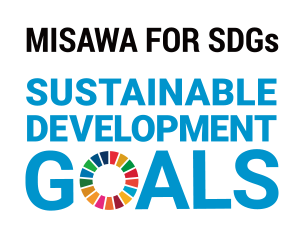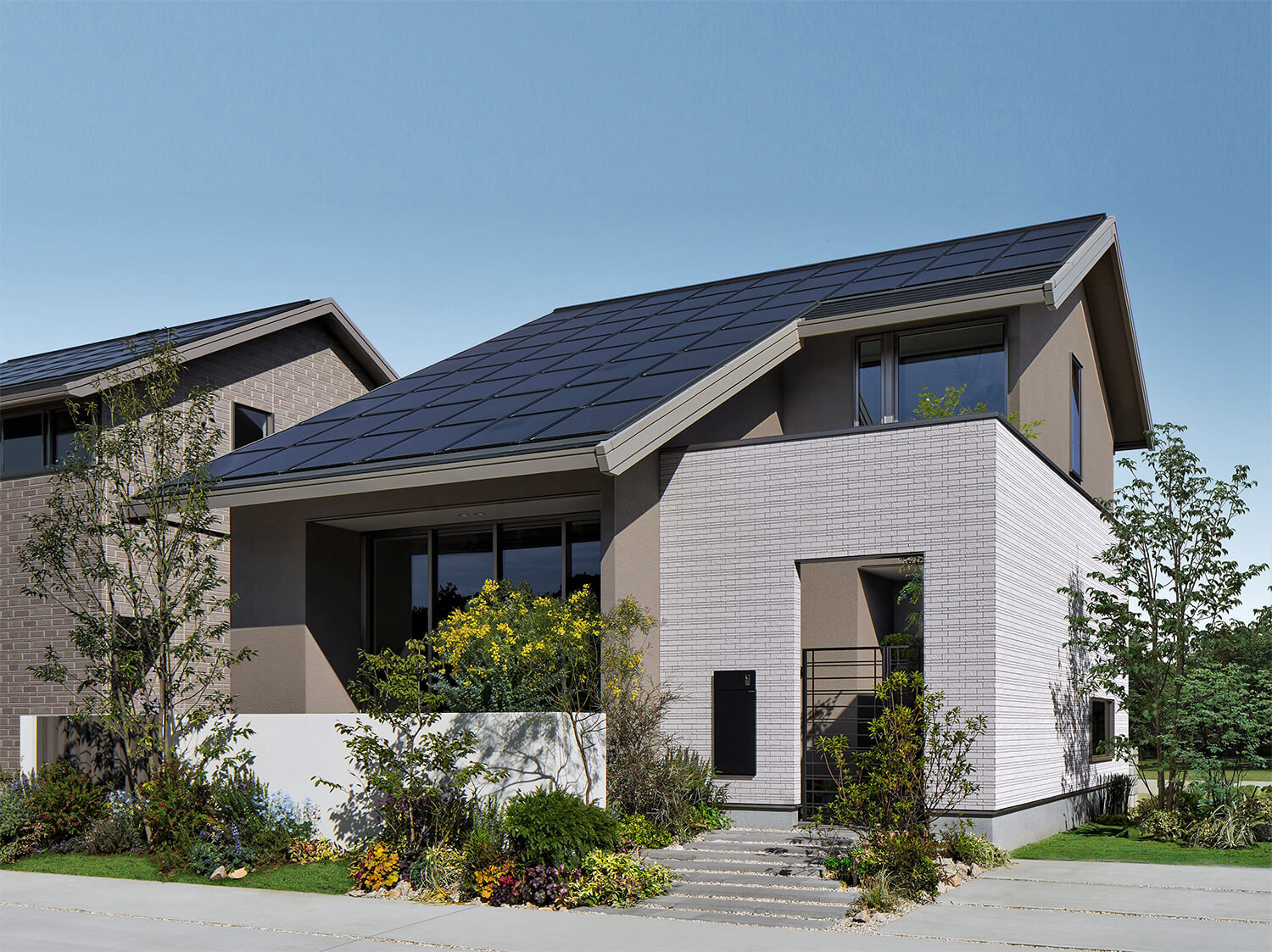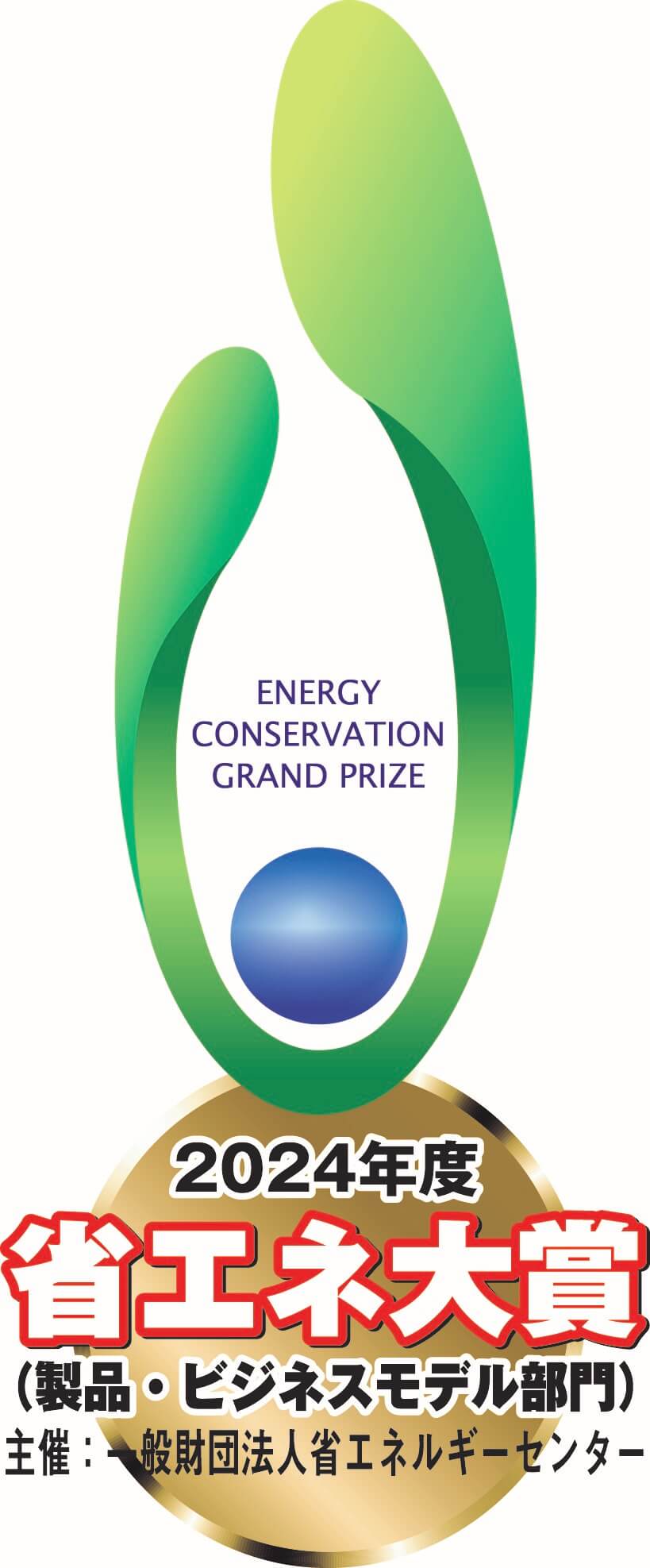
Sustainability management
Establishing key challenges and indicators through engagement with stakeholders
Reviewing Sustainability Challenges
To address changing social conditions, such as the SDGs and carbon neutrality, Misawa Homes has reviewed its commitment to sustainability. As a result, it has selected 26 new sustainability challenges to take on.
We surveyed the expectations and assessments of 2,056 stakeholders, including homeowners, business partners, and employees.
Review of Key Sustainability Challenges
Select sustainability challenges
To identify the most vital sustainability challenges for Misawa Homes, we looked at our sustainability actions and selected 26 challenges in eight categories, based on the SDGs, various questionnaire surveys, and issues that other companies in the industry are dealing with.
Setting Key Sustainability Challenges
We sent questionnaires to 2,056 stakeholders to gauge their expectations and assessments of the 26 selected challenges.
To set our Key Sustainability Challenges, we identified the 26 challenges that stakeholders had the highest expectations of and considered most important.
Defining Key Sustainability
Indicators for the Key Sustainability Challenges
By positioning the critical sustainability issues as vital challenges for the company, defining key indicators for individual cases, and calculating our performance every year, we can monitor our progress over time and “visualize” our sustainability actions.
The impact of massive earthquakes has raised the level of appreciation for, and expectations toward disaster-resistant housing and community development.Additionally, it was found that there is high expectation for efforts toward achieving carbon neutrality and the use of building materials and supplies with low environmental impact and CO2 emissions.
Misawa Homes Sustainability Challenges
| Creating carbon-neutral, recycling-oriented homes and communities | ① | Working toward carbon neutrality through ZEH and LCCM® homes | |
|---|---|---|---|
| ② | Use of building materials and resources with low environmental impact and CO2 emissions | ||
| ③ | Reduction of waste and utilization of the circular economy | ||
| ④ | Efforts towards the utilization of new energy sources such as hydrogen | ||
| Building safe and secure homes and communities | ⑤ | Improving indoor air quality and building homes with infection control features | |
| ⑥ | Improving indoor air quality and building homes with infection control features | ||
| ⑦ | Developing high-quality, durable homes that can be lived in for a long time | ||
| Supporting an aging society with fewer children | ⑧ | Developing housing for the elderly and offering nursing care and welfare services | |
| ⑨ | Developing housing and facilities suited to raising children | ||
| ⑩ | Developing communities with integrated medical, nursing care, and childcare | ||
| Taking action on biodiversity conservation | ⑪ | Utilizing sustainable forest resources and contributing to environmental conservation | |
| ⑫ | Promoting environmentally harmonious homes and communities | ||
| ⑬ | Expanding “Misawa Forest Matsumoto” and other environmental conservation initiatives | ||
| Working to increase customer satisfaction | ⑭ | Making use of AI and IoT, or Internet of Things, to propose new ways of living and offer new services | |
|---|---|---|---|
| ⑮ | Proposing excellent designs, as evidenced by the "G Mark" and "Kids Design Awards" we have received, with the quality assurance we have long established | ||
| ⑯ | Further improving our system of long warranties with total support, including rebuilding, relocation, and asset utilization | ||
| Providing an excellent working environment and promoting work style reforms | ⑰ | Promoting health management for employees | |
| ⑱ | Promoting diversity and inclusion | ||
| ⑲ | Improving workplace environments and eliminating workplace accidents | ||
| ⑳ | Work style reform and productivity improvement through DX | ||
| Communicating with local communities | ㉑ | Resolving social issues in collaboration with business partners and government agencies | |
| ㉒ | Engaging in social contribution activities in art, culture,sports, education and welfare | ||
| ㉓ | Supporting recovery and reconstruction after a major disaster | ||
| Other challenges | ㉔ | Promoting appropriate information disclosure and compliance | |
| ㉕ | Building a society with an excellent housing stock by strengthening our renovation and existing home distribution business | ||
| ㉖ | Expanding our housing business overseas using technologies and know-how cultivated in Japan | ||
SUSTAINABILITY REPORT 2024
Key Sustainability Challenges
| Key Sustainability Challenges | Key sustainability indicators | Actual figures (FY2022) |
Actual figures (FY2023) |
Actual figures (FY2024) |
Relation to SDGs | |
| Building decarbonized, environmentally conscious homes | ① | ZEH supply rate※1 | 77% | 89% | 93% |
|
| Durable high-quality housing certification rate | 57.4% | 57.6% | 60.5% | |||
| ② | Reduction of waste generated at new build sites | 20.5Kg/㎡ | 22.6Kg/㎡ | 19.8Kg/㎡ | ||
| Building safe, secure homes | ⑤ | MGEO adoption rate | 48.8% | 52.6% | 67.4% | |
| ⑥ | Reduction of VOC diffusion in indoor air | 95.0% | 95.0% | 95.0% | ||
| Improving customer satisfaction | ⑭⑮⑯ | Customer satisfaction (overall) ※2 | 92.9% | 91.7% | 93.5% |
|
| Customer satisfaction (buildings) ※2 | 95.4% | 95.1% | 96.0% | |||
| Improving working environments, and work style reform | ⑰⑱⑲ | Percentage of female employees※3 | 21.3% | 22.3% | 24.5% | |
| Number of overtime working hours per person※3 | 21.2hours/month | 23.7hours/month | 22.1hours/month | |||
| Percentage of employees taking childcare leave※3 | 82.0% | 86.0% | 100.0% | |||
*1 The percentage of ZEH (including Nearly ZEH) out of the group’s newly constructed detached housing (custom and ready-built housing outside Hokkaido).
*2 The percentage of customer satisfaction survey respondents who answered “Satisfied” or “Somewhat satisfied” out of the five available options.
*3 Actual figures from Misawa Homes.
Sustainability Metrics (FY2022-2024)
| ISO26000core subjects | Sustainability indicator | FY2022 | FY2023 | FY2024 |
|---|---|---|---|---|
| human rights | Number of help line reports (employees) |
18cases※1 | 19cases※1 | 17cases※1 |
| Labor practices | New graduates employed | 38(122※1) | 50(182※2) | 76(223※1) |
| Number of mid-career people employed (direct dealers for the Misawa Homes Group) |
7(235※1) | 13(239※2) | 12(156※1) | |
| Number of retirement-age employees rehired | 39 | 51 | 62 | |
| Average time with the company (men) | 20.7years | 22.8years | 20.9years | |
| Average time with the company (women) | 15.2years | 16.8years | 15.5years | |
| Annual turnover | 3.3% | 2.9% | 3.2% | |
| Percentage of paid leave taken | 38.2% | 40.6% | 43.2% | |
| ★Percentage of employees taking childcare leave(all) | 82.0% | 86.0% | 100% | |
| Percentage of employees taking childcare leave(men) | 71.4% | 80.3% | 100% | |
| Number of employees taking elderly care leave | 0 | 0 | 0 | |
| Number of employees working reduced hours | 137 | 118 | 115 | |
| ★Number of overtime hours per employee | 21.2h/month | 23.7h/month | 22.1h/month | |
| Hiring rate of people with disabilities | 2.36% | 2.35% | 2.33% | |
| Number of foreign employees hired | 3 | 5 | 3 | |
| Percentage of women in management positions | 2.4%(4.6%※1) | 2.6%(4.9%※1) | 4.0%(4.5%※1) | |
| ★Percentage of female employees | 21.3%(25.2%※1) | 22.3%(25.7%※1) | 24.5%(23.7%※1) | |
| Number of work-related accidents (requiring 4 or more days off work) |
31cases | 29cases | 29cases | |
| Number of first-class architects | 315(608※1) | 314(573※1) | 303(583※1) | |
| Number of real estate transaction specialists | 868(1979※1) | 885(1956※1) | 856(1999※1) | |
| Number of first-class building operation and management engineers |
180(568※1) | 180(568※1) | 180(596※1) | |
| Education and training expenses per employee | 27,866yen | 20,090yen | 39,875yen | |
| environment | CO2 emissions per building in the residence phase | 1.70t-CO2/building per year | 1.42t-CO2/building per year | 1.25t-CO2/building per year |
| Forest-certified timber procurement ratio | 84.4% | 82.6% | 78.0% | |
| Quantity of PRTR chemical substances used in the factory production phase |
3.16g/㎡ | 1.29g/㎡ | 0.98g/㎡ | |
| Note) Green Purchasing Rate = Percentage of goods and services with low environmental impact purchased |
43.8% | 89.0% | 45.5% | |
| Fair operating practices | ||||
| Number of compliance trainings held | 8,084※1 | 8,047※1 | 9,152※1 | |
| Number of leaks of personal information | 10cases※1 | 10cases※1 | 23cases※1 | |
| Number of help line reports (suppliers) | 0cases※1 | 0cases※1 | 0cases※1 | |
| Cooperation with suppliers | Twice per year at procurement policy meetings ※ | |||
| Consumer issues | ||||
| ★ZEH supply rate※2 | 77%※1 | 89%※1 | 93%※1 | |
| ★MGEO adoption rate | 48.8%※1 | 52.6%※1 | 67.4%※1 | |
| Number of patent applications | 66cases | 92cases | 106cases | |
| Number of patents granted | 51cases | 72cases | 54cases | |
| Research and development expenses | 1,378million yen※1 | 1,923million yen※1 | 1,902million yen※1 | |
| Design performance evaluation percentage | 59.7%※1 | 63.6%※1 | 71.8%※1 | |
| Construction performance evaluation percentage | 41.0%※1 | 44.6%※1 | 44.6%※1 | |
| ★Durable high-quality housing certification rate | 57.4%※1 | 57.6%※1 | 60.5%※1 | |
| Cumulative G-Mark acquisition | 167cases | 172cases | 173cases | |
| Number of introductions (from Misawa Homes owners and occupants) |
2,890cases※1 | 2,495cases※1 | 2,601cases※1 | |
| Number of news releases | 37cases | 33cases | 55cases | |
| Number of website sessions (annual) | 13,620 thousand times※1 | 12,156 thousand times※1 | 13,781 thousand times※1 | |
| ★Customer satisfaction (general) (Percentage of respondents who answered "Satisfied" or "Somewhat satisfied" out of the five available options on letters of inquiry to owners) |
92.9% ※1 | 91.7% ※1 | 93.5% ※1 | |
| ★Customer satisfaction (building) (Percentage of respondents who answered "Satisfied" or "Somewhat satisfied" out of the five available options on letters of inquiry to owners) |
95.4% ※1 | 95.1% ※1 | 96.05% ※1 | |
| Community involvement and development |
||||
| Number of environmentally symbiotic houses | 107※1 | 175※1 | 113※1 | |
| Call center complaint reception rate (Percentage of complaints from neighbors of all calls fielded by call centers) |
0.58% ※1 | 0.48% ※1 | 0.43% ※1 | |
| Number of schools holding Antarctica Classes /number of students (children) |
179school・14,537students※1 | 148school・13,342students※1 | 215school・16,462students※1 | |
| Number of employees dispatched to relevant industrial groups (including seconding) |
18 | 16 | 16 | |
| Donations given/raised | 710,000 yen | 8,400,000 yen | 6,330,000 yen | |
★Key sustainability indicators
*1 Includes Misawa Homes Group figures.
*2 The main factor for the difference is reduced working hours during child-rearing in their 30s and 40s.
*3 The percentage of ZEH (including Nearly ZEH) out of the group’s newly constructed detached housing (custom and ready-built housing outside Hokkaido).
Main external evaluations in FY 2024
Winner of the Good Design Award
- Award-winning Home: "be in harmony"

Home:"be in harmony"
Winner of the Kids Design Award
Main sponsor:KIDS DESIGN ASSOCIATION
- Category of designs to support childbirth and raising kids
- SMART STYLE Roomie -GRAND ROOF- WEB
-

SMART STYLE Roomie -GRAND ROOF-
- Category of designs to support childbirth and raising kids
- SMART STYLE Roomie -Single-story Kura Type-
-

SMART STYLE Roomie -Single-story Kura Type-
- Kids Design Award Jury Chairperson’s Special Prize
- Coby PreSchool Tsutsumino
Recipient of the Special Jury Award of the Kids Design Award

Design Reviewing Project for Preschool Yard and Building Based On Children's Physical Activities
Kids Design Award Jury Chairperson’s Special Prize
Jointly won by Misawa Homes Institute of Research and Development Co., Ltd.; Misawa Homes Co., Ltd.; Prof. Suguru Torii's Research Team, Faculty of Sport Sciences, Waseda University; Prof. Kaori Ishii's Research Team, Faculty of Sport Sciences, Waseda University; and Wakatake Nursery School, Social Welfare Service Corporation Wakatake Fukushi Kyokai

Community
- Won Minister of Economy, Trade and Industry Award at 75th National Calendar Exhibition

Misawa Homes 2024 Calendar of The Lives and Handwriting of Historical Figures
Products/Technology
- Ranked No.1 in the "2023 House Builder Competitor Deterrence Power Ranking", a ranking that identifies companies whose patents were most frequently cited by Japanese Patent Office examiners as reasons for rejecting patent applications from other companies.


- Received the ECCJ Chairman's Award at the 2024 Energy Conservation Grand Prize Awards by the Energy Conservation Center, Japan WEB


Working environment improvement
- Misawa Homes recognized as a “2025 Excellent Health Management Corporation White 500”
- Eight Misawa Homes Group companies and the Misawa Homes Health Insurance Association certified as “2025 Excellent Health Management Corporations” in the SME category
- Awarded three stars under the “Eruboshi” certification by the Minister of Health, Labor and Welfare for excellence in promoting the advancement of women, in line with the Act on Promotion of Women’s Participation and Advancement in the Workplace
- Certified as a “Sports Yell Company 2025” by the Japan Sports Agency








